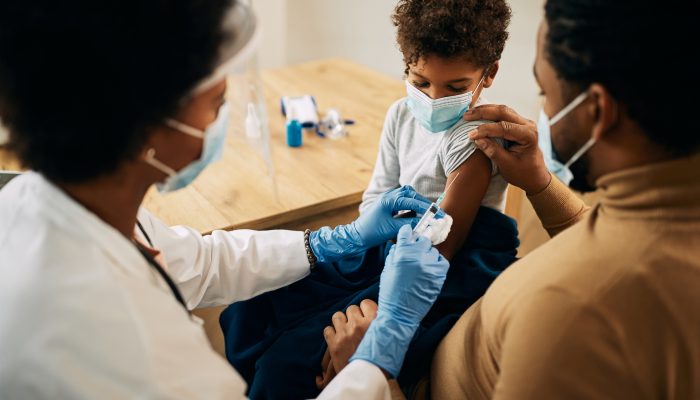The Philadelphia Department of Public Health is currently tracking an outbreak of measles.
In response, the City is working to identify everyone who may have been exposed, checking their vaccine status, warning them that they may have been exposed, and issuing quarantine and exclusion recommendations where necessary.
Currently, the Health Department is reporting that there are 9 total confirmed cases.
Measles is a very dangerous virus. However, Philadelphia has high vaccination rates, with at least 93% of children fully vaccinated by age 6. Yet:
- About 90% of people who have close contact with an infected person will get measles if they’re not vaccinated.
- About 1 in 5 unvaccinated people who gets measles in the United States is hospitalized.
- As many as 1 out of every 20 children with measles gets pneumonia, the most common cause of death from measles in young children.
- About 1 child out of every 1,000 who get measles will develop encephalitis, or swelling of the brain, which can lead to convulsions and can leave the child deaf or with intellectual disability.
- Nearly 1 to 3 of every 1,000 children who become infected with measles will die from respiratory and neurologic complications.
If you aren’t vaccinated, get vaccinated immediately
Contact your healthcare provider about vaccines if:
- You haven’t been vaccinated.
- You have children that are at least one year old and haven’t been vaccinated.
MMR vaccine — which protects against measles, mumps, and rubella — is extremely safe and effective at preventing measles. MMR vaccine has been safely used for decades and protects millions of Americans. Two doses of vaccine are 97% effective at preventing measles. People who have received two doses of vaccine and are not severely immune-compromised are very unlikely to get measles.
Children should get their first dose of vaccine between 12 and 15 months of age. They should get their second dose between 4 and 6 years of age. If you or your child haven’t gotten both doses by age 6, you should get your first or second dose as soon as possible. Infants 6 to 11 months who are traveling internationally should get an early dose of MMR. Talk to your healthcare provider to learn how you can get your MMR vaccine.
What to do if you may have been exposed to measles
If you’re immune to measles
If you are immune to measles, you don’t have to do anything. People are immune to measles if they:
- Were born before 1957.
- Have already had measles.
- Have received two doses of measles-containing vaccine (usually given as measles, mumps, and rubella — or MMR — vaccine) and aren’t immune-compromised.
If you’re not immune to measles
You should take precautions if you may have been exposed and aren’t immune to measles. This includes infants under the age of 12–15 months, who typically haven’t been vaccinated yet.
If you or your child aren’t immune, you should:
- Contact your healthcare provider or pediatrician right away, especially if you don’t feel well. Tell your doctor about your possible measles exposure.
- Alert your healthcare provider before visiting. Tell them that you’ve been exposed to measles, and ask them to call the health department.
- Stay home. You could give measles to vulnerable people, so you must quarantine.
If you’re not sure if you’re immune
If you were exposed to measles and aren’t sure if you’re immune, you should:
- Contact your healthcare provider or pediatrician right away, especially if you don’t feel well. They can review your immunization records to make sure you’ve had both doses of MMR vaccine.
- Wear a mask in indoor public spaces and around anyone who is unvaccinated, until you learn your status. This will help prevent others from being exposed.
Symptoms of measles
Measles is an extremely contagious virus. Each person who has measles can infect dozens of others. Measles symptoms usually appear about a week or two after being infected. The first symptoms are usually:
- High fever.
- Cough.
- Runny nose.
- Red, watery eyes or pinkeye.
A few days after the first symptoms, more symptoms appear. Those symptoms are:
- Koplik spots, which are tiny white spots that can appear in the mouth.
- Measles rash, which usually begins as flat spots that appear on the face at the hairline and spread downward to the neck, trunk, arms, legs, and feet.
- An even higher fever, which can present when the rash appears.
In people with lighter skin colors, the rash can appear red. In people with darker skin colors, the redness may be harder to see, or it may appear purple or darker than surrounding skin. The Health Department has images of the rash on different color skins available online. If you are visiting that page on your phone, you may be prompted to click “Continue to website” to see the images.




